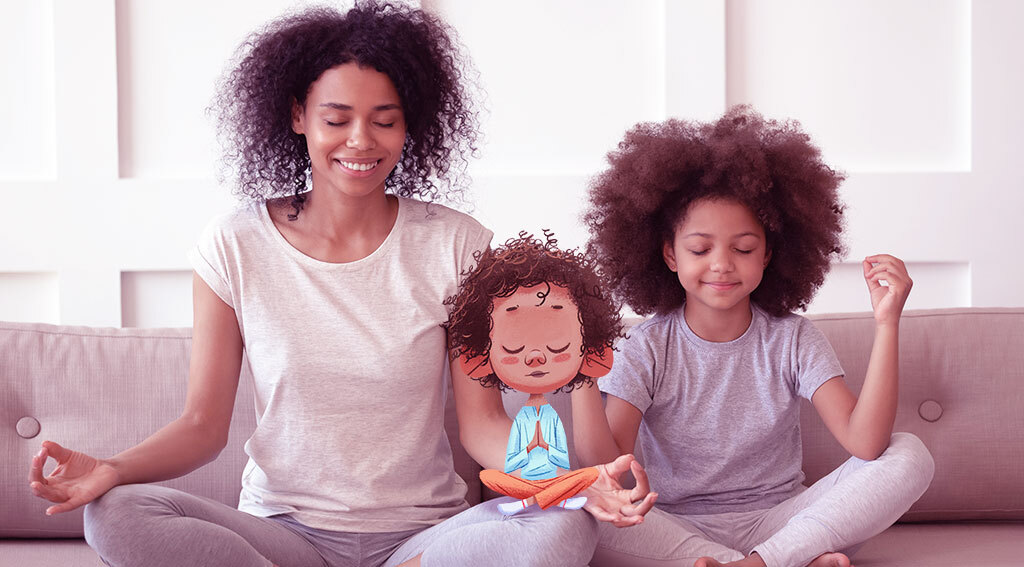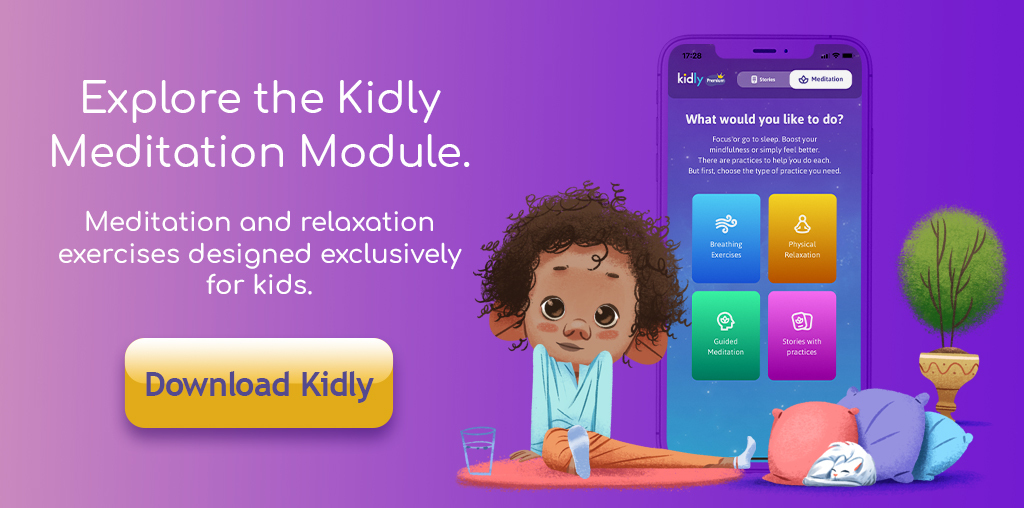
Children and meditation: What are the real benefits?
In light of our busy stressful lives, it can sometimes be hard to understand what needs meditation fulfills in the world of children. Growing up, however, is never easy, as it involves constant transformations.
Meditation can have a positive impact on your children’s lives in a variety of different ways, including how they respond to changes in their emotional states and living conditions, new environments, and concerns about schooling.
In our adult lives, which are faster-paced than ever before and filled with all kinds of stimuli, meditation offers a transformative experience that can help us stay balanced. But what about our children? Since they lead fun lives full of play, why would they need to do meditation?
Meditation, yoga, mindfulness… Today, we have at our fingertips these ancient teachings, which are like a first aid kit, as they promote conscious awareness, the regulation of stress and mind-body connections. We now see that this first aid kit plays a more critical role than ever before in our adult lives, which have become so fast-paced and are filled with various kinds of stimuli. But what’s going on in our children’s worlds? Do they also have a genuine need for meditation and practices of awareness?
We tend to think that children are already living in the moment, freely experiencing their emotions as they play and have fun. However, childhood is a period in which new feelings start arising and there are all kinds of growing pains. Children must adapt as they begin entering various social environments and they are faced with challenging new experiences. That’s precisely the point where meditation comes into play because it can help them better understand their emotions and soften the impact those feelings have on them.
Childhood is a special period of time when it is easier to live in the moment and difficult adult experiences have yet to appear on the horizon. In those days, when we play for hours on end, and have fun laughing with our friends, completely oblivious to the passing of time, our ability to truly live in the moment is much stronger. For that reason, it is an easier matter for us to not only internalize meditation and make it a part of our lives, but also use it to shore up our happiness. At the same time, it is easier to make meditation a habit and an ongoing practice.
How should we explain meditation?
In its most basic form, awareness meditation refers to being in the present moment and being aware of what is happening around us. It may involve what we are feeling or what’s going on with our bodies in that moment. We know that it is not easy to completely silence our minds, or achieve a state of perfect silence. When we meditate, our sole focus is on being able to observe what we are experiencing in a calm, gentle manner.
So how should we explain such an abstract construct to a young child? In light of their age and stage of development, explaining it in the simplest and most concrete terms is crucial to ensure that they are able to grasp meditation and put it into practice. Amy Saltzman, an awareness coach, replied to the question of how to explain meditation to a 4-year-old child in the following terms, saying that instead of trying to describe it verbally, we should encourage them to feel what it’s like, for example by telling them, “Okay now, let’s sit still and try to be completely silent.”
Meditating with your children
When it is done together, meditation can be a very transformative practice not only for children but for parents as well. Experiencing that state of the “here and now” involves sharing quality time together as well as establishing strong communication and a calm state of being. As such, it is a powerful experience for everyone in which feelings are regulated and a space is opened up for themselves and each other.
When we meditate with our children, we can proceed using simple methods. This may involve drawing their attention to their bodies and asking them to focus on whether they have any aches, pains or itchiness. Alternatively, by focusing on our surroundings together and watching what’s happening around us, we may observe an animal or a tree, or listen to the sound of the wind.
By taking into account the attention span and interests of children we can transform meditation into a more entertaining and powerful practice. For instance, doing meditation together with short-term activities and fun animated characters will help ensure that it is effective, enjoyable and suitable for their colorful worlds.
The benefits of doing meditation with your children
- Conscious awareness: Children who, by means of meditation, have developed a heightened awareness of their own emotions and what’s happening in their surroundings are both less reactionary and more careful in their behavior.
- Quality of sleep: One of the most difficult issues that parents face is getting their kids to fall asleep. Quite a few studies have shown that children who do meditation fall asleep more easily and their quality of sleep improves.
- Parent-child relations: With regard to spending quality time together and establishing a strong relationship, meditation, which supports strong parent-child relationships, also helps children become more empathetic and better listeners as well.
- Academic performance: Practices based around conscious awareness have a positive impact on school performance because they strengthen children’s friendly relations, boost their creativity and bolster their attention spans and self-sufficiency.
- Focus: Just as meditation helps improve our ability to focus, it can also be an important tool for concentration for children who are hyperactive or have attention deficit disorder.
- Emotional regulation: For children, anger, fear and disappointment are some of the most commonly felt emotions and they can be difficult to accept. When kids don’t get their way, meditation can be a crucial mechanism for helping them become aware of those emotions and staying balanced.
- Inner happiness: The scientific community discovered long ago that meditation is an important factor in the reduction of stress. Regular meditation can help children lead happier, more enjoyable and more satisfactory lives.
- Needs: Even we as adults are often unable to fully recognize many issues that are related to our needs such as exhaustion, hunger and burnout. Meditation can boost both our and our children’s bodily awareness and in doing so help us better express our needs.
- Acceptance: Meditation opens up a space to improve our and our children’s ability to accept difficult emotions. When we meditate with our children, that space becomes a wonderful gift that can help us observe many of those feelings we suppress because they seem “childish” and look upon them with greater compassion.
It’s a wonderful thing that children who are more aware, better able to focus, have the ability to regulate their emotional lives, and realize at a young age that life can be a singular whole with all its beauties and challenges can fully experience inner happiness. Moreover, making progress by being part and parcel of that journey as a parent and acquiring powerful resources for ourselves and our children is, without a doubt, an incomparable experience.
By utilizing the Kidly meditation model, you can transform the practice of meditation into enjoyable parent-child time and support your children’s holistic development by way of animated films, entertaining characters, easily applied relaxation and breathing exercises, and lots of stories with accompanying activities.

